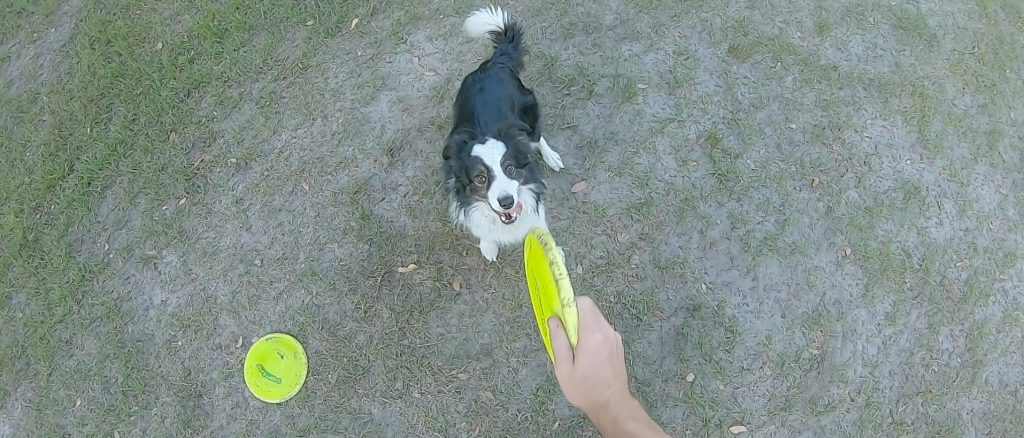
Interior Flatwork | Locking In the Scoot and Team Connectedness Via the Front Cross
A Flash Discovery!
Summer of 2019, in TimeLord fashion, the Scoot to Front Cross was drudged up from history in an unearthed unplayed disc dog Flash Jam from 2017.
Today’s lesson will build off of that TimeLord Flash Jam.
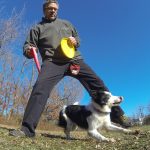 A Scoot is a Set Up Move where the dog scoots backwards between the handler’s legs. It’s a really clever Set Up Move, the image of your dog spinning around and shimmying backwards... More. It wasn’t always that way. This stability can be created on the fly, in flow, and during disc play using the Front Cross
A Scoot is a Set Up Move where the dog scoots backwards between the handler’s legs. It’s a really clever Set Up Move, the image of your dog spinning around and shimmying backwards... More. It wasn’t always that way. This stability can be created on the fly, in flow, and during disc play using the Front Cross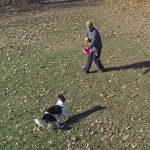 On a Front Cross, your dog switches Flanks in with you in front of them. From Clock to Counter Clockwise Flank or vice versa. Taken directly from the canine agility world, the Front... More. Cookies worked, will work, and do work, but the Front Cross is a terrific tool for Hooking Up and Locking In the Scoot.
On a Front Cross, your dog switches Flanks in with you in front of them. From Clock to Counter Clockwise Flank or vice versa. Taken directly from the canine agility world, the Front... More. Cookies worked, will work, and do work, but the Front Cross is a terrific tool for Hooking Up and Locking In the Scoot.Connecting with the Front Cross
The Front Front is a stable position directly in front of the handler. Front is an traditional obedience skill. Usually your dog sits in this position, but standing is often acceptable as well, especially in... More Cross
Front is a stable position directly in front of the handler. Front is an traditional obedience skill. Usually your dog sits in this position, but standing is often acceptable as well, especially in... More Cross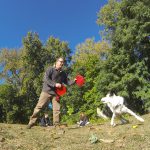 A Cross is an canine agility term that describes a change of working sides. Your dog moves from your left to your right (Heel to Side) or from Clock to Counter. Crosses are... More is extremely useful for connecting with your dog, and connecting after a Scoot can be interesting.
A Cross is an canine agility term that describes a change of working sides. Your dog moves from your left to your right (Heel to Side) or from Clock to Counter. Crosses are... More is extremely useful for connecting with your dog, and connecting after a Scoot can be interesting.
The Front Cross is a change in Working Flank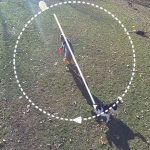 The Working Flank is a moving position. On a Working Flank the dog is out to your side some distance and holds position, moving with you as you move around the field. The... More – dog and handler switch from working on the Clockwise to Counter Clock Flank
The Working Flank is a moving position. On a Working Flank the dog is out to your side some distance and holds position, moving with you as you move around the field. The... More – dog and handler switch from working on the Clockwise to Counter Clock Flank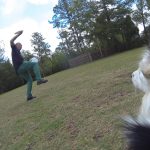 Out to the side of the handler is the Flank. If the dog is out to the handler's right or left the dog is on Flank. If the dog is moving with the... More (Heel to Side) or vice versa.
Out to the side of the handler is the Flank. If the dog is out to the handler's right or left the dog is on Flank. If the dog is moving with the... More (Heel to Side) or vice versa.
In order to switch Working Flanks the team must first be on a Working Flank – it is this sticking point that makes the Scoot a tough Set Up Move to control.
The Front Cross creates an understanding of Team Connectedness. It forces the team to get hooked up and connected and delivers an innate sense of working position.
If the dog has no history of a Front Cross, odds are the dog has no history of hooking up and working with the handler. Of course this is largely situational, as the Front Cross is a fact of dog – it’s how we move and align the dog to front position using positional pressure, but it is not always clear, situationally, that we should be hooking up.
The resolution and release of the Scoot is one such situation.
Connecting on the Scoot
As the Scoot finishes, the dog tends to fire forward into Heel or Side position, usually Heel, to get to where the cookie has historically happened during the learning process.
This firing forward is how the dog hooks up with the handler. It is the situational understanding of hooking up. “This is how we do it and how it is done.”
This firing forward to the historical reward placement is usually real trouble for most handlers, it was for me and I’m quick and aggressive.
Sequencing after the Scoot was really hard and getting a Wait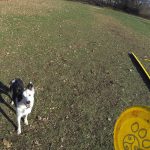 Waiting on cue and situationally is extremely important for disc dog freestyle training. The competition field might not see too much waiting going on as everything is supposed to be happening in flow,... More back there was nearly impossible, as I was fighting reward history and reward placement.
Waiting on cue and situationally is extremely important for disc dog freestyle training. The competition field might not see too much waiting going on as everything is supposed to be happening in flow,... More back there was nearly impossible, as I was fighting reward history and reward placement.
Over An Over is any leaping catch that happens over top of the handler’s body. Overs are usually named by the part of the body over which the dog flies, i.e - Leg Over,... More the last few years I’ve developed a couple of tricks for getting a stable dog after the Scoot, but by far the best solution, the most elegant solution I’ve found, is the Front Cross.
An Over is any leaping catch that happens over top of the handler’s body. Overs are usually named by the part of the body over which the dog flies, i.e - Leg Over,... More the last few years I’ve developed a couple of tricks for getting a stable dog after the Scoot, but by far the best solution, the most elegant solution I’ve found, is the Front Cross.
Turn Into the Dog
To accomplish this skill, simply turn into the dog and present Basic Flatwork Position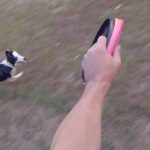 Basic Flatwork Position (BFP) is a standard position of the handler in the Working Flank; hand reaching out towards the dog (usually with a disc) with the dog on the same plane as... More.
Basic Flatwork Position (BFP) is a standard position of the handler in the Working Flank; hand reaching out towards the dog (usually with a disc) with the dog on the same plane as... More.


 Flatwork is the stuff that happens between the catches. How the team moves and transitions, often without the disc, is flatwork. Flatwork concepts in disc dog are taken from the agility and herding... More PositionIn the Play+ philosophy, "Position" is the final stage within the "Next" phase of a Cycle of Play. It acts as a pivotal link between the "Next" phase and a new "Now" phase. More Clock to establish Working Flank. The Working Flank must be established for the dog to understand that we will be switching flanks. if this freeze frame is truly looked at, it is obvious that Eppie is on the Clockwise Flank.
Flatwork is the stuff that happens between the catches. How the team moves and transitions, often without the disc, is flatwork. Flatwork concepts in disc dog are taken from the agility and herding... More PositionIn the Play+ philosophy, "Position" is the final stage within the "Next" phase of a Cycle of Play. It acts as a pivotal link between the "Next" phase and a new "Now" phase. More Clock to establish Working Flank. The Working Flank must be established for the dog to understand that we will be switching flanks. if this freeze frame is truly looked at, it is obvious that Eppie is on the Clockwise Flank.


Dog Steps Into Focus (1:22-1:36)
In the hyperlinks above, there is a lesson that talks about how the dog wants to move to where the handler is looking and how to establish position during and after the Scoot with cookies.
Connecting on the Vault (1:48 – 2:48)
The Front Cross can be employed to hook up with the dog after a Vault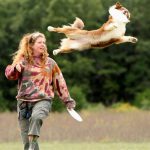 The dog uses the player´s body as a launching pad to jump for a disc. A Vault is a leaping catch from the handler’s body. The dog leaves the ground for the target... More in similar fashion to the Scoot. Getting a dog to stop after a Vault is not always a simple operation.
The dog uses the player´s body as a launching pad to jump for a disc. A Vault is a leaping catch from the handler’s body. The dog leaves the ground for the target... More in similar fashion to the Scoot. Getting a dog to stop after a Vault is not always a simple operation.
Use the Front Cross to teach the dog that you two will be hooking up and working together as soon as the trick finishes.





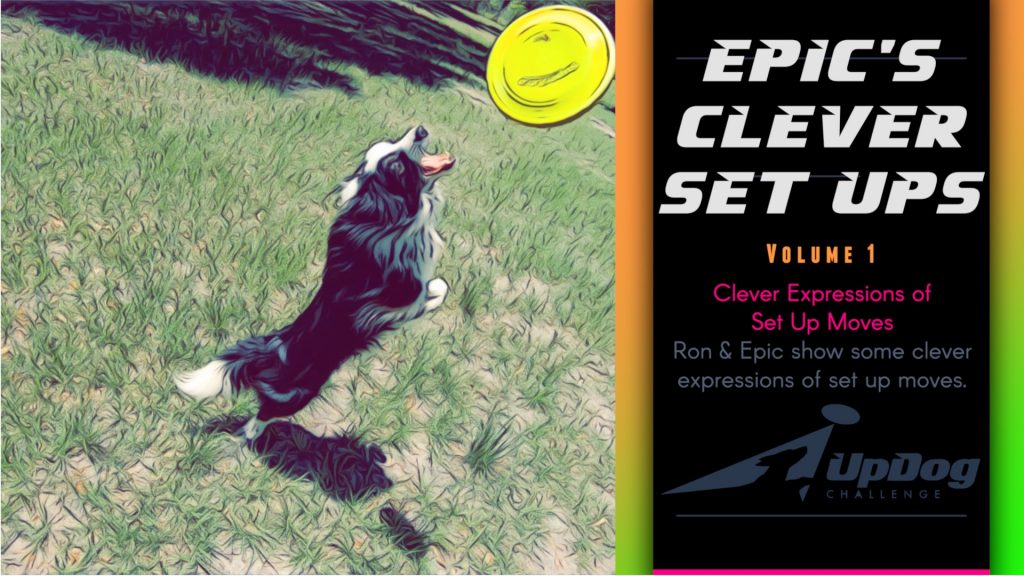

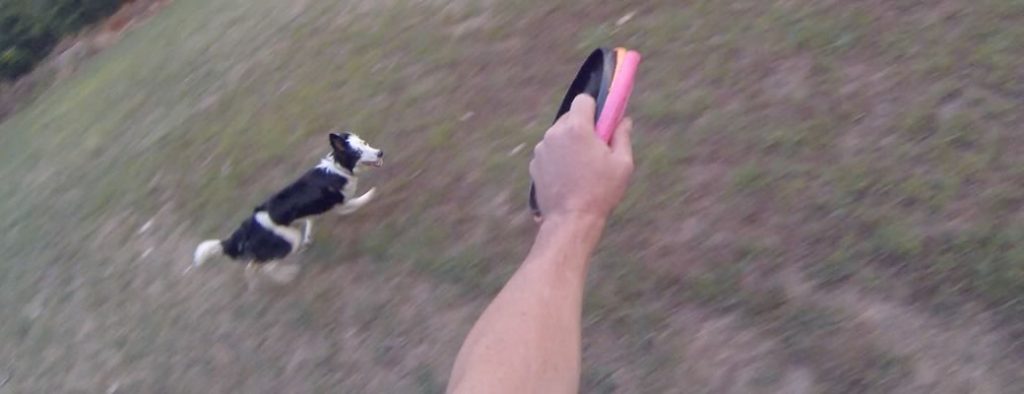
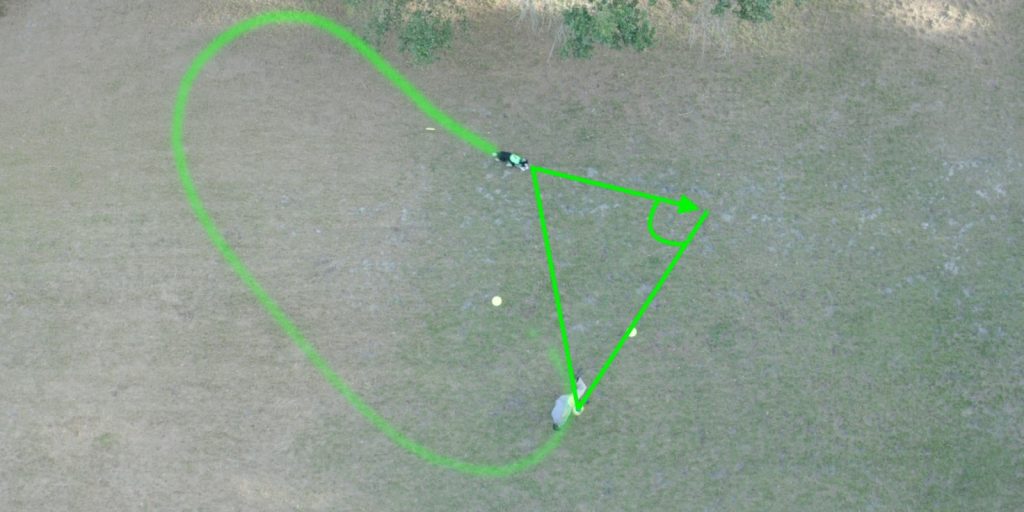
Responses